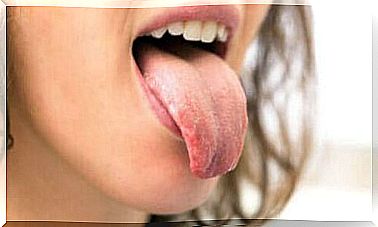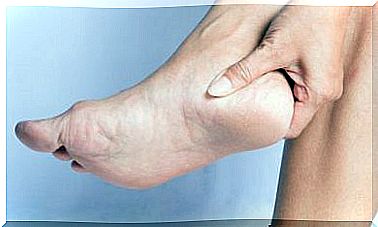Gluten Allergy And Pimples On The Arms

You hear more and more about gluten intolerance. A disorder that, although not as serious as celiac disease, also affects other parts of the body when you eat foods that contain this protein. In this article we would like to talk about one of the most common symptoms of gluten intolerance: pimples on the arms that occur for no apparent reason.
Celiac disease affects the whole body

Celiac disease is an autoimmune disorder that is characterized by a permanent intolerance to all foods that contain gluten.
Gluten is found in wheat, barley and rye. It is also called TACC (for food labeling), and is found in all processed foods made from these grains. Celiac disease is a genetically inherited condition and can occur at any time during one’s life. By eating gluten, a person with celiac disease will suffer from an immune response. Which releases antibodies that not only affect the digestive system, but the whole body.
Is gluten intolerance the same as celiac disease?

Several disorders have emerged in recent years that are associated with varying degrees of non-celiac gluten sensitivity. In these cases, gluten intolerance does not have an autoimmune base, but may be linked to other and currently unknown factors.
The problem is that the disorder is more difficult to diagnose. The symptoms can appear gradually and are often confused with other health problems. For this reason, it is important to be aware of the symptoms of gluten intolerance, one of which is the onset of pimples on the arms.
Pimples on the arms
Some people get small pimples on their arms. This symptom, which is medically referred to as queratosis pilaris. Is an excess of keratin that appears on the upper arms and which is a result of a lack of vitamin A and essential fatty acids.
This deficiency is not caused by poor nutrition. Gluten intolerance gradually damages the gut and prevents the absorption of fat.
Many people have these pimples for years without realizing that they may be linked to gluten intolerance. To find out if pimples on the upper arm are linked to this protein, let’s take a look at some of the other symptoms.
Other symptoms

Here are some more possible symptoms of gluten intolerance:
- Chronic indigestion, such as bloating, flatulence or acid regurgitation.
- Fatigue or tiredness, especially after eating foods that contain gluten (pasta, biscuits, bread, etc.). Chronic fatigue and fibromyalgia should also be considered.
- Hormonal irregularities. It is easy for women to find out if their cycles are irregular or painful, if they are infertile, or have had an abortion.
- Migraine. Migraines are almost always associated with digestive problems, although it is not always due to gluten.
- Inflammation or pain in the joints.
- Anxiety, depression or mood swings.
If you have a family history of autoimmune diseases (thyroiditis, rheumatoid arthritis, psoriasis, multiple sclerosis, scleroderma, etc.) you have a greater risk of this intolerance.
How do I know if I have gluten intolerance?
If you have several of these symptoms. You should make an appointment with your doctor for testing and diagnosis to help confirm or deny this disorder. However, the tests are not always 100% reliable. And in some cases, the test results may be negative despite the fact that there is a certain degree of gluten intolerance.
Another way to find out if you have gluten intolerance is by completely eliminating gluten from your diet for a month.
You need to be strict since your body needs time to remove toxins that undigested gluten leaves in the body. You also need to be very careful when it comes to product labeling. You will be amazed at how many foods contain gluten. If you eat out, always ask if the food contains flour, which is often used in sauces, stirrers, thickeners, nuts, sweets, beer and other alcoholic beverages.
After a month, try reintroducing gluten into your diet and look for any symptoms.









